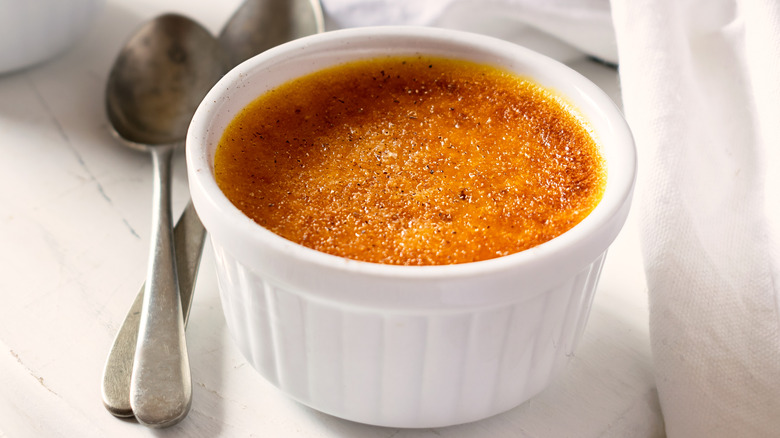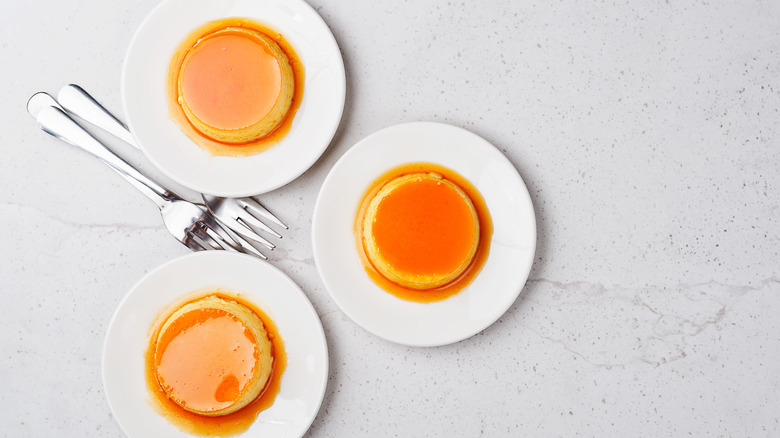What Is The Difference Between Crème Brûlée And Flan?
Few treats exude luxury quite like a scrumptious custard. The combination of an ultra rich, creamy texture and sweet, decadent flavor are pretty much the stuff of royalty. Depending on where you're from, the first thing that comes to mind when you hear the word custard could be either flan or crème brûlée.
Crème brûlée is a popular custard dessert with European origins that date back centuries (via French Country Food). Flan, on the other hand, is a custard dish with roots dating back to the Roman empire that is widely popular throughout Latin America. According to Tastemade, flan is sometimes also called crème caramel, which makes it even easier to confuse the two! But if you've been lucky enough to have tried both crème brûlée and flan, you may already know there are some subtle, yet key differences that make each of them unique.
As both crème brûlée and flan are custard desserts, they share a similar base recipe which ChowHound describes as being a creamy mixture of egg yolks, sugar, and dairy. Both desserts are baked in a water bath, and are also both time consuming to prepare, with Tastemade stating that many crème brûlée recipes require three or more hours, while flans can take even longer. However, despite these similarities, both crème brûlée and flan have their own special features that make them easily distinguishable from each other.
The key difference between crème brûlée and flan
If you were to order both dishes at a restaurant, the first difference you'd notice between the two is their presentation. ChowHound explains that, typically, crème brûlée is served inside the individual dessert ramekin that it's cooked in, while flan is usually served outside of its dish.
Another quality that makes each dessert unique is its topping. Crème brûlée comes with a hard, torched sugar crust that many recognize for providing the dish with its signature, pleasing crack when you dig into it with a spoon, giving way to the yummy custard underneath. With flan, the caramel topping is soft, giving the entire dish a uniform smooth, silky texture. And don't be surprised if you get a flan that looks slightly different depending on where you order it. According to Tastemade, flan styles may vary based on region — a Mexican flan, for example, might come doused in a heavy blanket of caramel sauce, while a Spanish version will likely have a slightly burnt sugar coating on the underside.
While both flan and crème brûlée consist of the same basic ingredients, it seems they are quite different in their own ways — but where flan and crème brûlée don't differ at all is their deliciousness. Both are sure to satisfy any craving for the finer things in life.

